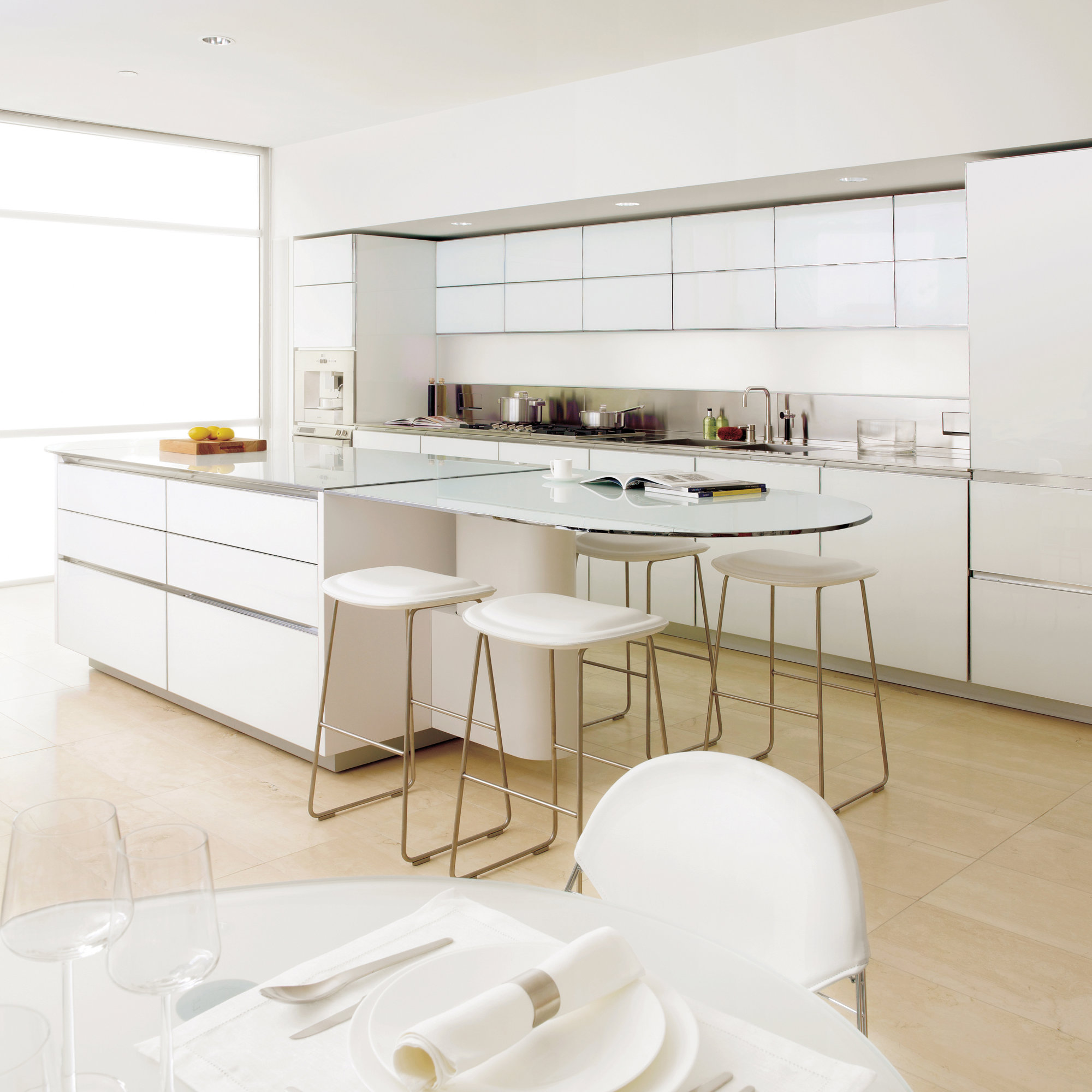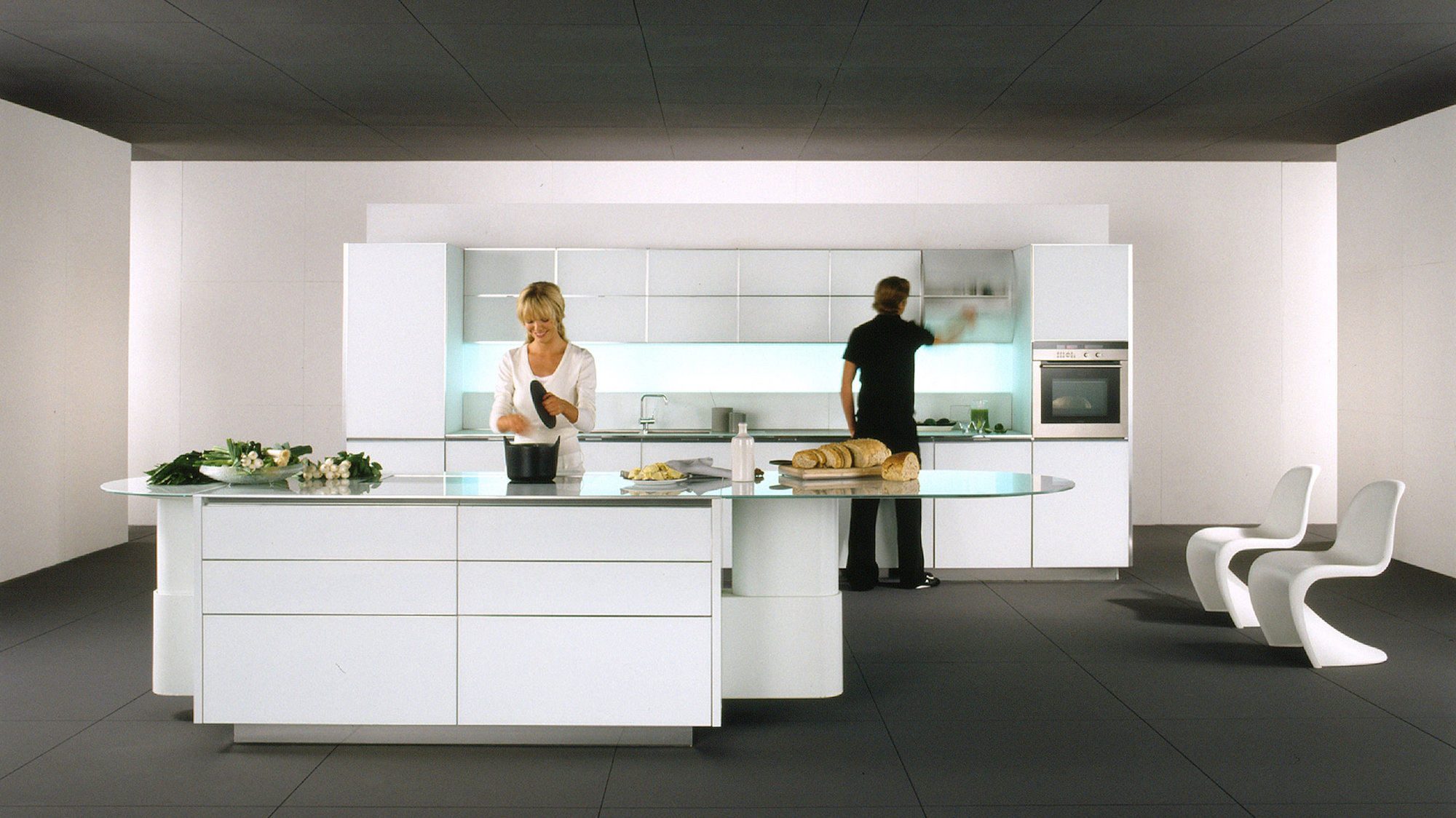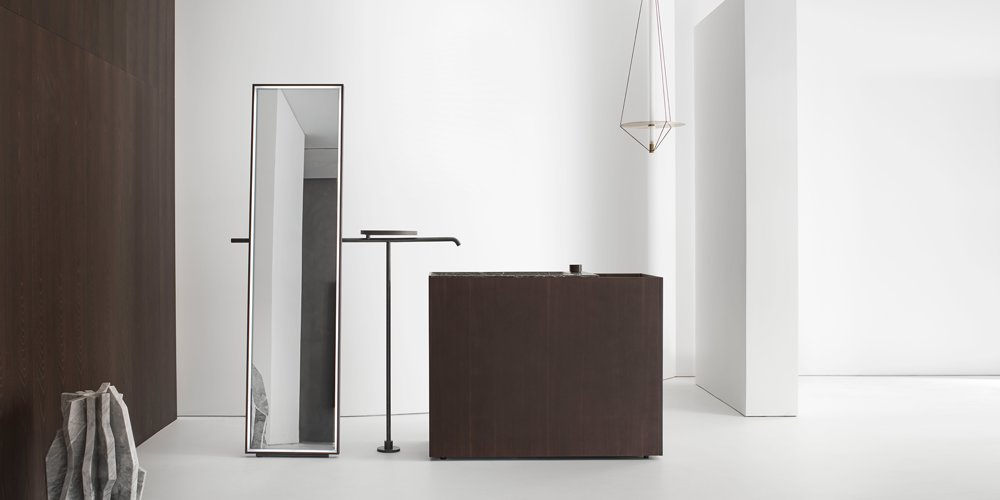The project began as an exploration into what happens around a kitchen table. More than simply a place to prepare food, the modern kitchen has become the social focus of the house, an informal space where people gather, socialise, eat and work. The form of the Dada Place kitchen was generated by this variety of activities and a desire to bring a new level of sophistication to the manufacture of this type of furniture.
While conventional fitted units are restrictive and subject to changing fashions in interior design, the Place kitchen comprises five simple modular elements with a minimal, timeless aesthetic: a slim oval table; a static height food preparation area; an adjustable height island, which can be raised or lowered to suit different activities; a wall unit with services at the rear; and a storage tower. Based on the dimensions of a standard kitchen, these different components can be arranged to suit the occupiers’ lifestyles and available space. While in the UK, fitted kitchens are commonplace and are usually sold with a property (and invariably replaced soon after to suit the tastes of the new owner), in many European cities, for example, kitchens tend to be moved with the rest of the furniture. In this respect, the Dada Place kitchen is inherently flexible – it can be reconfigured and easily relocated, without the need for expensive on-site installation.
High quality materials are used for the interior as well as the exterior of the cabinets and Dada Place kitchen is the first without any MDF, eliminating the rough finish usually found on the inside of cupboards. Instead, the panels, which are available in glass, ceramic or wood, are clipped into a steel and aluminium frame. The hinges and handles are seamlessly integrated with the doors, the extractor hood folds back into the wall and the lighting is discreetly incorporated in the underside of the cabinets. The modular design also includes a technical wall, with fridge, dishwasher and appliances and, using the analogy of a building, its framework can be constructed before the services are installed.






















